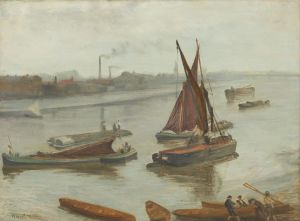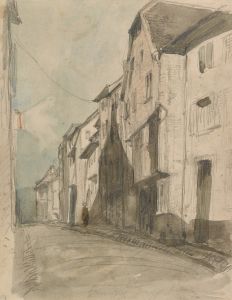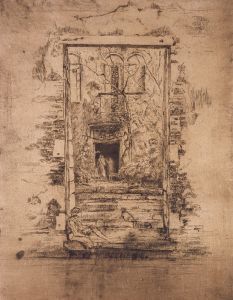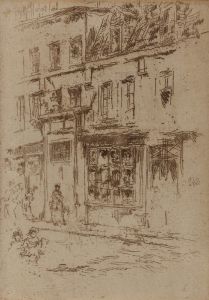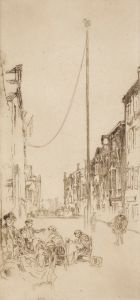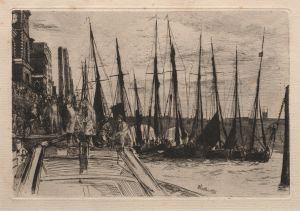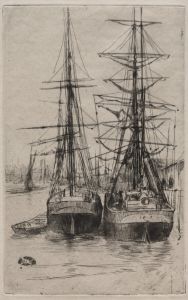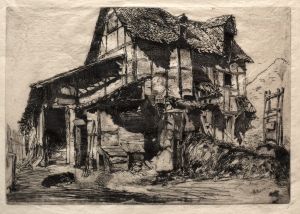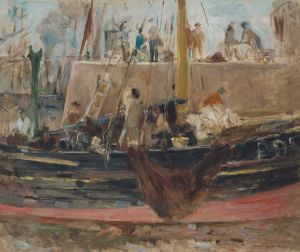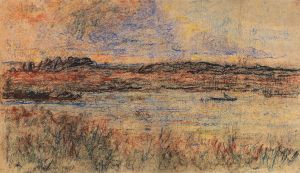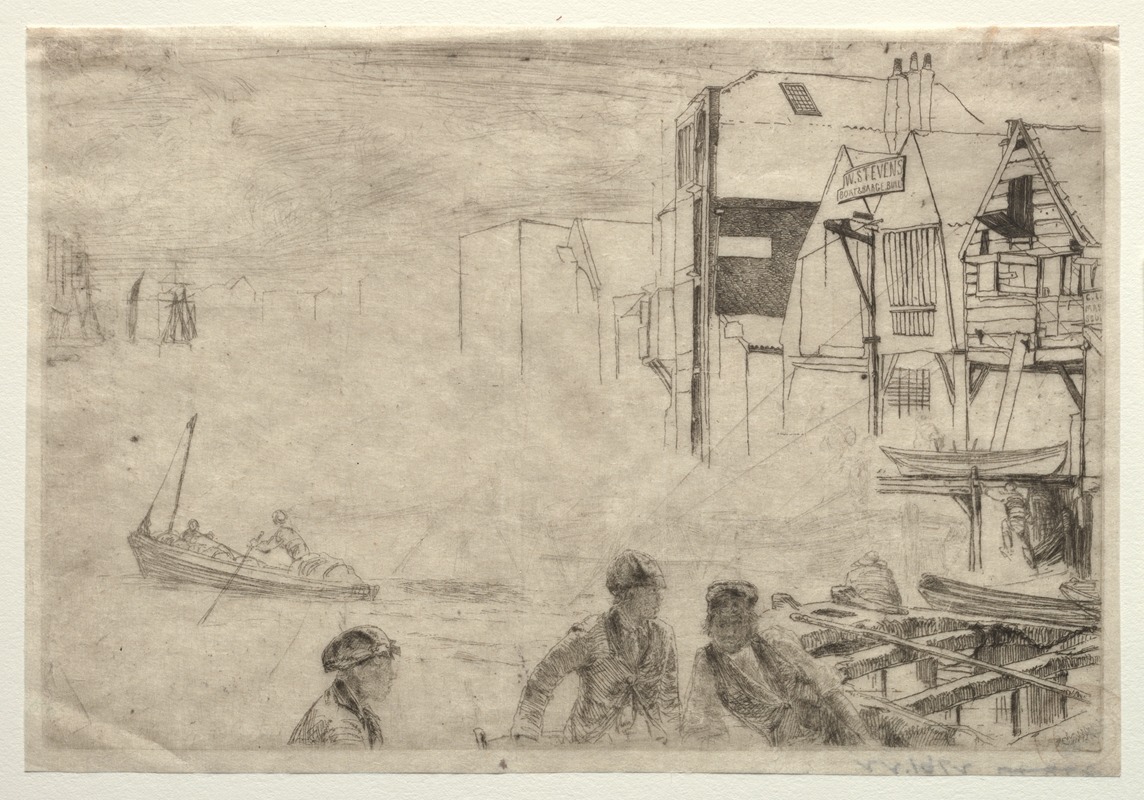
A Wharf
A hand-painted replica of James Abbott McNeill Whistler’s masterpiece A Wharf, meticulously crafted by professional artists to capture the true essence of the original. Each piece is created with museum-quality canvas and rare mineral pigments, carefully painted by experienced artists with delicate brushstrokes and rich, layered colors to perfectly recreate the texture of the original artwork. Unlike machine-printed reproductions, this hand-painted version brings the painting to life, infused with the artist’s emotions and skill in every stroke. Whether for personal collection or home decoration, it instantly elevates the artistic atmosphere of any space.
James Abbott McNeill Whistler, an American-born artist active during the late 19th century, is renowned for his contributions to the Aesthetic Movement and his innovative approach to art. Among his extensive body of work, "A Wharf" is a lesser-known piece that reflects his interest in capturing atmospheric effects and the interplay of light and shadow.
"A Wharf" is a work that exemplifies Whistler's fascination with urban and maritime scenes, a recurring theme in his oeuvre. The painting depicts a waterfront setting, likely inspired by Whistler's time in London, where he lived and worked for much of his career. The Thames River and its surrounding docks and wharves were frequent subjects in his art, as they provided a rich source of visual inspiration. Whistler's ability to render the subtle tonal variations of water, sky, and industrial structures is evident in this piece.
The painting showcases Whistler's signature style, which often emphasized mood and atmosphere over detailed representation. His use of a limited color palette and soft, almost ethereal brushwork creates a sense of harmony and tranquility. This approach aligns with his belief in "art for art's sake," a principle that prioritizes aesthetic beauty over narrative or moral content.
Whistler's works, including "A Wharf," were influenced by Japanese art, particularly the simplicity and asymmetry found in ukiyo-e prints. This influence is apparent in the composition and spatial arrangement of the painting, which avoids clutter and focuses on the essential elements of the scene. The result is a work that feels both intimate and expansive, drawing the viewer into the quiet beauty of the waterfront.
While specific details about the creation and exhibition history of "A Wharf" are not widely documented, it is consistent with Whistler's broader artistic pursuits during the period. His depictions of the Thames and other urban landscapes often aimed to capture fleeting moments of light and atmosphere, reflecting his mastery of tonalism.
Today, Whistler's contributions to art are celebrated for their innovation and influence on modern aesthetics. "A Wharf," though not as famous as some of his other works, remains a testament to his skill in transforming everyday scenes into poetic visual experiences.





